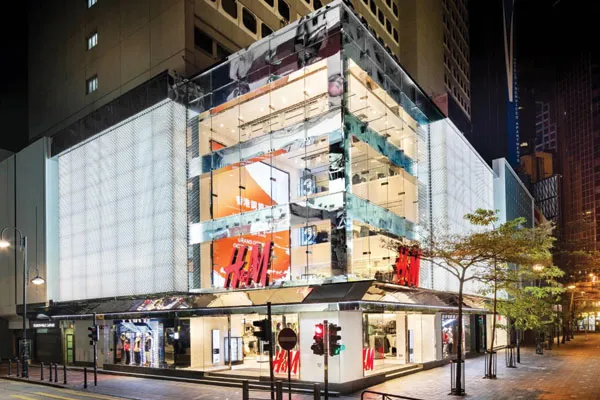
CONTINUOUS SALES … Undesirable & unsustainable business strategy
Black Friday, Singles Day and numerous pre- and post-Christmas sales in the last quarter of each year offer shoppers great year-end deals as well as opportunities for retailers to off-load their inventory.
The last two months of 2015 saw a never-ending string of sales, so much so that sales fatigue is surfacing and consumers are beginning to expect discounts as the norm rather than the exception. How will the continuous period of discounting impact retailers?
Retail Asia turns its focus on this rather disturbing trend.
Year-end seasonal sales is a major boon for retailers. However, retailers looking to cash in during the 2015 holiday season were caught off guard by the warmer than usual weather due to the El Nino effect, thereby dampening sales of winter wear inventory.
In the US, Macy’s recently announced it is laying off more than 3,000 workers across the country to save US$400 million for the company. The retailer attributed 80% of its sales decline to a slump in winter wear sales and the strong US dollar discouraging tourist spending.
Struggling retail measures
Uniqlo and H&M also attributed softer sales performance to the warm weather. H&M, with 3,924 stores worldwide, saw its sales increase by 4% YoY in November last year, lower than targeted. It will be a challenge for the retailer if H&M, already facing very low margins, needs to provide deeper discounts just to move its year-end stock.
In South Korea, according to Yonhap News Agency, discount store chain E-Mart said it saw its winter clothing sales drop by 11.4% YoY in December last year while its heaters and heating pads sales dropped by 31.3% YoY. Not surprisingly, its fast-selling items were outdoor sportswear and gear, which increased by 45% YoY.
Retailers looking to cash in during the 2015 holiday season were caught off guard by the warmer than usual weather due to the El Nino effect, thereby dampening sales of winter wear inventory.
Meanwhile, clothing and snow removal equipment sales dropped by 21.6% and 23.9% at discount store chain Lotte Mart, while at Lotte Department Store, sales for winter clothing and fur coats fell 5.4% and 8.8% YoY.
Besides the warm weather, retailers across the region had other reasons to organise sales and offer deeper discounts in a bid to boost its profits before closing their financial year accounts.
Hong Kong has been witnessing more and more Chinese tourists travelling and shopping in other tourist hotspots such as Japan and Europe amidst the crackdown on gift-giving in mainland China and exchange rate instabilities. This has pushed luxury brands such as Burberry, Gucci and Prada to offer deep discounts up to 50% during the Christmas holiday season. For luxury brands, this is considered to be an unusual measure — and this was the most extreme reduction since the Individual Visit Scheme for Mainland Chinese launched in 2003.
South Korea, which faced a sluggish economy and saw a 2015 summer sales performance slump due to the after-effects of the Middle East Respiratory Syndrome (MERS) and a tight labour market, had the government initiating a K-Day sales campaign from November 20 to December 13, with some retailers extending their sale period to Christmas.
According to Yonhap News Agency, more than 41,000 shops from 102 businesses, 500 traditional markets and 11 manufacturers took part in the sales event, the popular sales items being consumer electronics, clothing and fashion apparel.
The campaign seemed to have worked as according to the country’s Ministry of Trade, Industry and Energy, Korean retail sales by 25 major retailers rose by 8.4% YoY (KRW531.3 billion, US$440 million). Lotte and Shinsegae department stores saw a sales increase of 7.8% YoY while discount chains such as Lottemart, E-mart and Homeplus’ sales increased by 2.8% YoY. Meanwhile, sales for online shopping stores increased by 10.4% YoY, electronic appliance stores by 7.3% YoY and convenience stores by 23.6% YoY.
Hong Kong has been witnessing more and more Chinese tourists travelling and shopping in other tourist hotspots such as Japan and Europe amidst the crackdown on gift-giving in mainland China and exchange rate instabilities.
For sales campaigns in 2016, the Korean government is considering getting more manufacturers to cut prices for goods so the cost-saving benefits can be passed on to the consumers.
Another sales campaign last year — Black Friday Korea — saw 22 retailers participating in the campaign and raking in a 20.7% YoY sales increase to KRW719.4 billion during the two-week period.
The never-ending sales dilemma
These sales, Korea’s K-Day Sale, held just a month after Black Friday Korea (in the first two weeks of October), also coincided with the Korea Grand Sale in early September to mid-October last year.
Critics opined that too frequent sales as a profit-making strategy do not help retailers in the long run in the face of shrinking margins.
Shoppers worldwide are now being treated to more such frequent sales campaigns from retailers. Once sporadic and seasonal, sales are becoming more of a norm. How much sales can consumers take? It would only lead to sales fatigue.
According to an Economic Intelligence Unit (EIU) report, sales fatigue could become a reality as consumers move online for bargains and expectations of lower prices over Christmas shopping period becoming normal.
“Faced with a rash of sales dates right through from Black Friday in November to Manic Monday in the week leading up to Christmas, sales dates are becoming indistinct and blurring into a continuous period of discounting. This means that consumers are becoming desensitised to sales and are beginning to expect discounts as the norm rather than the exception,” said Jon Copestake, retail and consumer goods analyst at EIU.
The report also said that 2016 and beyond may see more mega sales as the China’s Singles Day on November 11 become more globally recognised.
Black Friday losing its appeal?
According to retail research house Conlumino, consumers are now less fanatical about Black Friday sales. Some 70% of 3,520 US consumers polled in early November last year said they view Black Friday as a less significant activity compared to before as there are already sales and discounts throughout the year. They also stated that Black Friday shopping is “less fun than it used to be”.
Interest in Black Friday was waning. According to the November survey, 45% of American shoppers said they would spend less compared to 2014, 24% said they would spend about the same and only 18% said they would spend more than 2014 — and 13% said they would not participate in the sales at all.
“This isn’t about finances, it’s more of a psychological shift in how consumers see Black Friday,” said Conlumino’s CEO Neil Saunders.
“The truth is that retailers have undermined Black Friday both by discounting all year round and by stretching the event over many days. That weakens its appeal and gives rise to a boredom factor. It’s like many things in life: the more you get of something, the less you tend to value it.
“The lack of interest seems to be more related to that fact that Black Friday has lost its power to wow and amaze shoppers.”
Brick-and-mortar retailers are particularly impacted as 62% of Americans said they do not see much point in visiting stores on Black Friday as they can now do their shopping online. Moreover, over 50% of those surveyed are of the opinion that shops should not open on Thanksgiving Day.
Festive m-commerce and e-commerce
When it comes to holiday retail sales, local brick-and-mortar retailers with no Web strategy or e-commerce platform lose out to aggressive online players offering more lucrative promotions and discounts as more shoppers swarm to local or global e-marketplaces such as Amazon.com.
When it comes to holiday retail sales, local brick-and-mortar retailers with no Web strategy or e-commerce platform lose out to aggressive online players offering more lucrative promotions and discounts.
According to Rakuten’s Shopping Secrets Survey 2015 report, almost 50% of shoppers in Asia said they prefer to shop online for the Christmas season and planned to increase their online shopping by 20% YoY on average.
Out of 2,500 shoppers surveyed in Singapore, Malaysia, Indonesia, Thailand and Taiwan, 47% chose e-stores for convenience (83%), ease of product comparison (55%) and cost-effectiveness and better deals (41%).
“The year-end season is usually the busiest time of the year for online retailers like us, with shoppers wanting to splurge due to great discounts (62%), liking to start a new year with new things (40%), or rewarding themselves after a year of hard work (33%),” said Masaya Ueno, director of Rakuten Asia.
In terms of gift choosing, Ueno added: “Our survey found that in general, when shopping for a gift, shoppers look at price (33%) as the single biggest factor influencing their decision of what to buy, followed by the likeability of a gift by the recipient (26%) and practicality of the gift (25%).”
Gift giving can be a stressful activity. Overall, 27% of Asian shoppers find Christmas to be a stressful holiday. Singapore shoppers are the most stressed (40%), followed by Taiwan (32%), Malaysia (30%), Indonesia (18%) and Thailand (17%). The survey also found that a quarter of gift recipients received gifts they disliked and three in five remembered what gift they received in the previous Christmas.
Gifts that recipients were not pleased with were re-gifted (38%), stored away (33%), donated to charity (24%), or sold off (13%).
According to Facebook, more than 80% of people surveyed — the Philippines (91%), Indonesia (83%) and Thailand (84%) — said Facebook is influential in their shopping decisions during the festive season. More than 50% of people in the Philippines, Indonesia and Thailand also said that Facebook is the preferred platform to seek advice about what to buy from others.
Retail store check-ins on Facebook spiked by 14% compared to the rest of the season, with 39% of check-ins taking place on Saturdays and Sundays.
Incidentally, Mondays are most popular for online shopping in the Philippines, Indonesia and Thailand, while Vietnamese prefer Thursdays and Singaporeans prefer Sundays. When it comes to shopping on mobile, Fridays are the most popular day across the region. And shopping continues even after the New Year countdown. In January, users are shopping online 19% more compared to the festive season on average, which means that many still browse and respond to the best post-Christmas deals.
According to Twitter, the evolution of social media has in many ways gone hand in hand with the evolution of mobile and e-commerce. A recent study by Custora highlighted that mobile traffic to e-commerce sites has increased from 3% to nearly 37% in the past four years.
That social media and e-commerce run in parallel is shown by a Nielsen survey that indicates 92% of consumers trust product recommendations from their peers, while another survey by digital marketing agency ODM Group shows that 74% of consumers rely on social media to influence their purchasing decisions.
Twitter also noted that shoppers progressively gather information as the festive season went on: 18% look for ideas while shopping; 41% have some information, but are open to further options; only 41% are already very sure of what they want to buy.
Going forward into the Lunar New Year of the Monkey, retailers have to be more nimble, creative and responsive to changing shopping habits of consumers, new and old, if they are to survive and thrive in new retail landscape.



















 Advertise
Advertise







